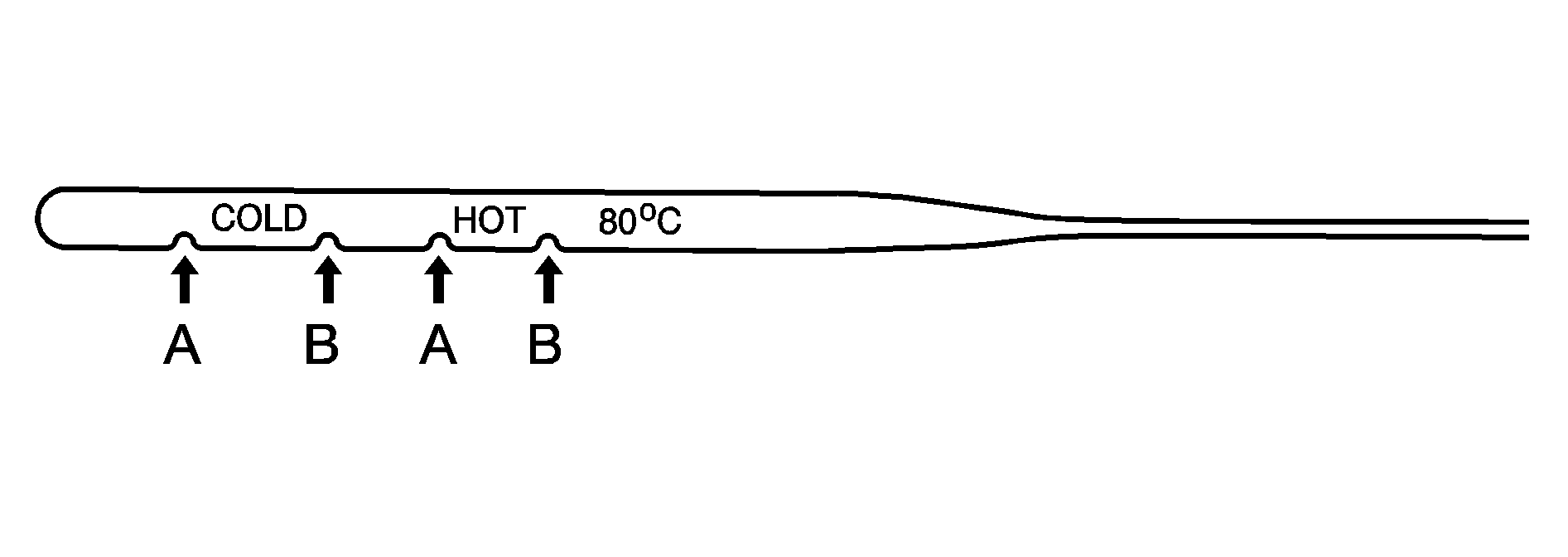When to Check Automatic Transmission Fluid
Check the automatic transmission fluid level at least twice a year. Add fluid if needed. See Scheduled Maintenance.
How to Check Automatic Transmission Fluid
Because this operation can be a little difficult, you may choose to have this done at the dealer/retailer service department.
If you do it yourself, be sure to follow all the instructions here, or you could get a false reading on the dipstick.
Notice: Too much or too little fluid can damage your transmission. Too much can mean that some of the fluid could come out and fall on hot engine parts or exhaust system parts, starting a fire. Too little fluid could cause the transmission to overheat. Be sure to get an accurate reading if you check your transmission fluid.
Wait at least 30 minutes before checking the transmission fluid level if you have been driving:
| • | When outside temperatures are above 90°F (32°C). |
| • | At high speed for quite a while. |
| • | In heavy traffic -- especially in hot weather. |
To get the right reading, the fluid should be at normal operating temperature, which is 158°F to 176°F (70°C to 80°C).
Get the vehicle warmed up by driving about 15 miles (24 km) when outside temperatures are above 50°F (10°C). If it is colder than 50°F (10°C), you may have to drive longer.
Checking the Fluid Level
Prepare the vehicle as follows:
- Park the vehicle on a level place. Keep the engine running.
- With the parking brake applied, place the shift lever in P (Park).
- With your foot on the brake pedal, move the shift lever through each gear range, pausing for about three seconds in each range. Then, position the shift lever in P (Park).
- Let the engine run at idle for three to five minutes.
Then, without shutting off the engine, follow these steps:
- Locate the automatic transmission dipstick which is located toward the front of the engine compartment, near the power steering fluid reservoir.
- Pull out the dipstick and wipe it with a clean rag or paper towel.
- Push the dipstick back in all the way, wait three seconds, and then pull it back out again.
- Check both sides of the dipstick. The fluid should be between MIN (A) and MAX (B) mark of the hot area of the dipstick.
- If the fluid level is in the acceptable range, push the dipstick back in all the way.
See Engine Compartment Overview for more information on location.

How to Add Automatic Transmission Fluid
Refer to the Maintenance Schedule to determine what kind of transmission fluid to use. See Recommended Fluids and Lubricants.
If the fluid level is low, add only enough of the proper fluid to bring the level into the area between the two dimples in the hot range on the dipstick.
- Pull out the dipstick.
- Using a long-neck funnel, add enough fluid at the dipstick hole to bring it to the proper level.
- After adding fluid, recheck the fluid level as described under "How to Check Automatic Transmission Fluid" earlier in this section.
- When the correct fluid level is obtained, push the dipstick back in all the way.
It does not take much fluid, generally less than one pint (0.5 L). Do not overfill.
Notice: Use of the incorrect automatic transmission fluid may damage the vehicle, and the damages may not be covered by the vehicle's warranty. Always use the automatic transmission fluid listed in Recommended Fluids and Lubricants .
